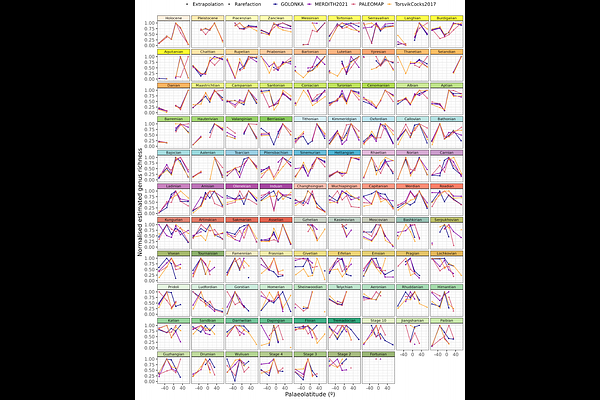Global plate model choice impacts reconstructions of the latitudinal biodiversity gradient

Global plate model choice impacts reconstructions of the latitudinal biodiversity gradient
Jones, L. A.; Gearty, W.; Buffan, L.; Allen, B. J.
AbstractThe latitudinal gradient of declining species richness from the Equator towards the poles is one of the most pervasive macroecological patterns on Earth today. However, the ubiquity of this trend over geological timescales remains unclear. One reason for this uncertainty is that palaeobiologists need Global Plate Models (GPMs) to estimate the latitudinal position of organisms\' remains at time of deposition. However, as GPMs constitute hypotheses for how tectonic plates have moved over Earth\'s history, reconstructions of the latitudinal biodiversity gradient (LBG) might also vary based on the GPM used. Here, using the fossil record of five major marine invertebrate groups, we evaluate the impact of GPM choice on reconstructions of the LBG over the Phanerozoic. Our results show that GPM choice can lead to different conclusions about the shape and strength of LBGs in deep time, even at a coarse spatial scale. These findings suggest additional caution is needed when reconstructing deep-time biogeographic patterns and macroevolutionary events, such as the origin of the present-day LBG. We therefore advocate for future palaeobiogeographic studies to conduct sensitivity analyses investigating the impact of GPM choice on their conclusions, and for greater interdisciplinary collaboration between palaeobiologists and palaeogeographic modellers to avoid common issues in the use of GPMs.